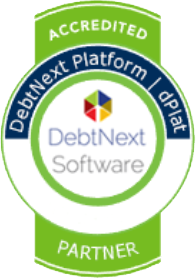In 2025, your customers expect speed, personalization, and empathy across every channel they use to reach you. In response, contact centers have evolved from reactive support desks into proactive, data-driven hubs of customer experience (CX).
Today’s best practices anticipate needs, streamline communication, and strengthen customer loyalty. That’s why customer service outsourcing has become a strategic growth move for businesses aiming to deliver better service while remaining agile.
Here are ten key ways contact center services are reshaping customer support in 2025, and how you can leverage them to stay ahead.
1. Outsourcing as a CX Strategy
Customer service outsourcing has come a long way from being a purely cost-driven decision. In 2025, outsourcing is increasingly viewed as a way to improve brand perception and deliver high-quality experiences, without overextending internal resources.
When you outsource your contact center, you gain access to trained agents, industry-specific knowledge, and cutting-edge tools that help you meet customer expectations on every channel. It also gives you the flexibility to scale your support operation as demand changes during peak seasons, product launches, or global expansion.
Outsourcing is no longer about doing more with less. It’s about doing better, faster, and more efficiently.
2. AI-Driven Customer Engagement
Artificial intelligence is now central to customer service operations—and it’s changing how businesses interact with their customers.
AI tools can:
- Power virtual agents to handle routine tasks like order tracking and password resets
- Support live agents with real-time recommendations and sentiment tracking
- Use predictive analytics to anticipate customer needs
- Automatically route inquiries to the most suitable agents based on context and intent
These tools increase efficiency while allowing for more intelligent, personalized interactions that drive better outcomes. We’ve supported companies by implementing hybrid AI-human models that improve resolution times and enhance customer satisfaction across the board.
3. True Omnichannel Support
Today’s customers don’t limit themselves to one communication method. They might start with a chat, follow up with an email, and expect consistent context if they call your support line the next day.
An effective contact center strategy includes a fully connected omnichannel approach, ensuring seamless transitions across phone, chat, email, SMS, and social media. The goal is continuity. Your customers shouldn’t have to repeat their issue or start from scratch on each platform.
With omnichannel support, you gain:
- Faster resolution through optimized channel workflows
- A consistent experience that builds trust
- Unified customer data that reveals deeper engagement trends
If you’re still treating each support channel separately, it’s time to integrate them into a unified customer journey.
4. Balancing Automation and Empathy
The most successful contact centers in 2025 use AI and automation to enhance human connections, not eliminate them. Sentiment analysis and real-time emotional cues help agents respond more thoughtfully, turning transactional moments into opportunities for relationship-building.
When customers are frustrated, tools that detect emotional signals can prompt supervisors or suggest empathetic phrasing and help your team de-escalate and resolve issues with care.
Efficiency matters. But it’s empathy that keeps customers coming back.
5. Prioritizing Data Security
Modern contact centers invest heavily in data security infrastructure:
- End-to-end encryption of all communications
- Role-based access control to prevent internal breaches
- Secure cloud environments with advanced monitoring
- Compliance with GDPR, CCPA, HIPAA, and other regulations
Data protection is about protecting customer trust as much as it’s about avoiding fines. And as more AI tools require access to customer data, the security measures behind them must be just as sophisticated.
6. Smarter Staffing Through AI Forecasting
Customer demand isn’t static. To deliver great support, you need to staff strategically so that the right number of agents are available at the right time.
AI-driven workforce management systems help you:
- Forecast call volume based on trends and external events
- Adjust staffing levels in real time
- Balance agent workloads to avoid burnout
This kind of proactive planning leads to shorter wait times, reduced operational costs, and better employee engagement. If you’re struggling with understaffing or inconsistent service levels, intelligent forecasting may be the missing piece.
7. Turning Interactions Into Insights
Every customer interaction is an opportunity to learn. The challenge lies in organizing and analyzing that data effectively.
With modern contact center tools, you can:
- Identify common questions that should be added to self-service tools
- Track sentiment trends to improve agent training
- Map customer journeys to pinpoint friction points
By using these insights, you can continuously improve the experience you deliver your customers.
We work with many clients to turn raw conversation data into actionable business intelligence, helping them shape CX strategies, streamline processes, and build smarter support systems.
8. Customizing with Seamless Integrations
Your business has unique needs, and your contact center solutions should reflect that.
Rather than relying on rigid, one-size-fits-all systems, look for platforms that offer open APIs and tailored integration with your existing CRM, ticketing software, or proprietary tools.
Seamless integration ensures:
- Consistency across departments
- Minimal disruption to your workflows
- A personalized experience for your customers and your support team
We’ve supported businesses across industries by developing custom workflows and integrations that reflect their operational goals without forcing them to abandon tools that already work well.
9. Measuring What Matters
One of the biggest advantages of modern contact center outsourcing is the ability to track and improve performance in real time.
When you have visibility into:
- Cost per contact
- Customer satisfaction and Net Promoter Scores (NPS)
- Retention rates and average handling time (AHT)
…you can make informed decisions that impact both the bottom line and the customer experience.
We’ve seen organizations reduce overhead and improve key CX metrics by streamlining processes and using data to drive continuous improvement.
As an example, Radius GS was able to help a veterinary service provider reduce customer wait times and improve satisfaction just by optimizing the tools and workflows they were already using.
10. Getting Ahead of Customer Needs
The future of contact center services is proactive. With predictive tools and real-time analytics, you don’t have to wait for your customers to reach out. You can identify potential issues before they escalate.
That could mean:
- Offering support before a subscription expires
- Notifying a customer about delays or service issues
- Providing upsell opportunities based on behavioral trends
This forward-thinking model improves engagement, reduces churn, and turns support from a reactive function into a value-driving part of your business.
Revolutionize Your Customer Support Experience
The role of contact centers has shifted, and the expectations are higher than ever. If your business is still treating customer service as a reactive, cost-centered function, now is the time to evolve.
At Radius Global Solutions, we’re here to help guide that transformation. Our approach is designed to support your goals—not just with tools and platforms, but with strategic insight and a deep understanding of what today’s customers expect.
Want to explore what’s next for your customer service in 2025? Contact Radius Global Solutions today!



